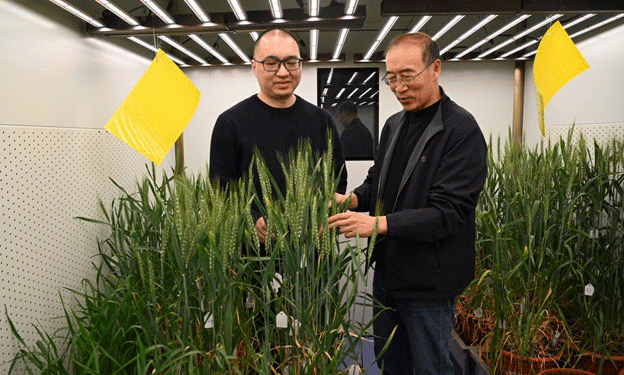Unlocking Wheat’s Immune Code: The “Chinese Beauty” Gene and a Global Leap in Crop Protection
In a landmark discovery that promises to revolutionize disease resistance breeding in wheat, researchers from the Institute of Genetics and Developmental Biology, Chinese Academy of Sciences, have cracked the molecular mechanism behind a rare, highly effective resistance gene found in Chinese landraces. Published in Science on March 28, 2024, this work is the culmination of a five-year research project led by Liu Zhiyong and Lu Ping, focused on unraveling wheat’s immune system against powdery mildew, a devastating fungal disease.
The Challenge: Powdery Mildew Threatens 100 Million Mu of Wheat
Powdery mildew, caused by the fungus Blumeria graminis f. sp. tritici, infects up to 100 million mu (≈6.7 million hectares) of China’s 350 million mu wheat crop, leading to 5–10% average yield losses, with severe outbreaks slashing yields by over 40%. Current varieties have struggled with lasting resistance due to the rapid evolution of the pathogen.
The Breakthrough: From “Sleeping Beauty” to “Chinese Beauty”
While searching for robust resistance genes, the team discovered Pm41, a promising gene in wild emmer wheat from the Fertile Crescent. However, its functional version—Pm41b—was inactive in modern wheat due to transposon insertions, earning the nickname “Sleeping Beauty” gene.
The real turning point came with the discovery of Pm24, a highly effective powdery mildew resistance gene in a Chinese landrace known as “Hulutou”, cultivated in the Guanzhong Plain, Shaanxi. Pm24, later renamed WTK3, encodes a tandem kinase protein, and its resistance is due to the precise deletion of six specific nucleotides—a genetic “sweet spot” unique to Chinese varieties. Researchers poetically dubbed it “Chinese Beauty”, likening it to the classical Chinese aesthetic of harmonious balance.
How It Works: The WTK3–WTN1 Defense Duo
Further studies revealed that WTK3 does not act alone. It partners with a non-canonical NLR protein, WTN1, forming a resistance complex that:
- Detects pathogen effector proteins using a PKF-Kin I sensor domain
- Triggers downstream immune responses via Kin II interaction with WTN1
- Initiates a calcium influx and programmed cell death (hypersensitive response) to block infection
Surprisingly, WTK3 also shares similarity with Rwt4, a gene known to confer resistance against wheat blast, and can recognize its PWT4 effector—a cross-pathogen resistance strategy that makes WTK3 a versatile immune receptor.
Global Collaboration: Two Teams, Two Papers, One Discovery
This research was conducted in parallel with a team led by Brande Wulff at KAUST (Saudi Arabia). Liu’s group’s insights helped Wulff’s team decode the resistance mechanism of Sr62, a gene conferring stem rust resistance, which also functions in tandem with an NLR protein.
The two groups coordinated their publication timelines, submitted simultaneously, and underwent three rounds of rigorous peer review, eventually publishing “back-to-back papers” in Science. The work has been praised by global experts like Jonathan Jones, who called it “a very important contribution to plant immunity.”
The identification and functional decoding of the WTK3–WTN1 complex not only deepens our understanding of wheat’s innate immunity but also provides a powerful genetic tool for breeders seeking durable resistance against devastating fungal diseases. As climate change intensifies plant disease pressures globally, precision gene editing and marker-assisted selection based on these findings could help safeguard wheat yields for years to come.
This breakthrough, rooted in China’s native germplasm and empowered by global collaboration, underscores how combining traditional resources with modern science is key to solving the world’s most pressing agricultural challenges.
Error





